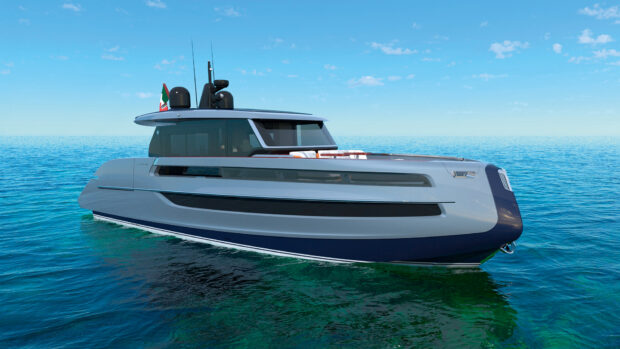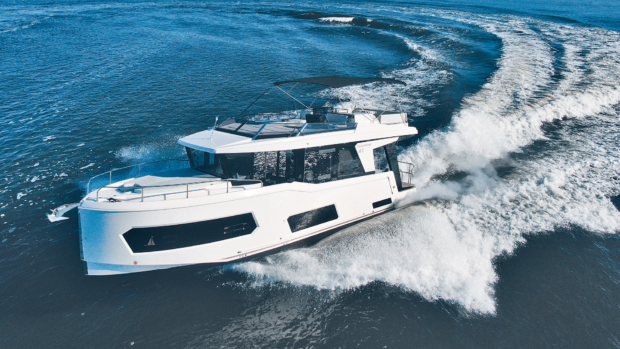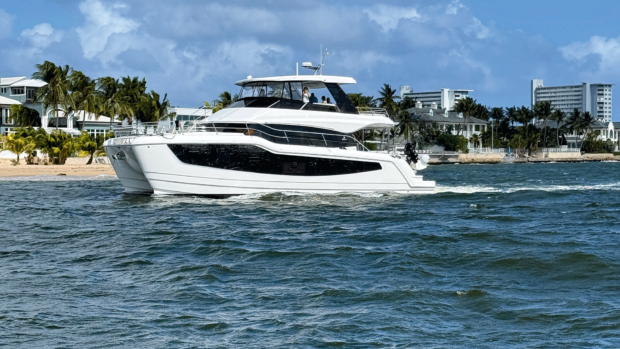The crew of Egret reach Mangareva Island and make a valuable friend
S23 07.22 W134 57.98 Rikieta Village, Mangareva Island, Gambier Island Group, French Polynesia (Mangareva means Floating Mountain in Polynesian).
Scott (YT) and Mary Flanders (MS) left Gibraltar on 16 September 2006, and we’ll be following their journey every step of the way, thanks to this unique online “blog”. For a complete list of all the couple’s blog entries click here
The crew ofEgretreach Mangareva Island and make a valuable friend
Saturday 17 May
Egret’sanchor (TK) dropped into 62ft of opaque water off Rikitea, the Gambiers’ only inhabited village at 2.25pm on Friday.
We set 290ft of chain and gave it a big pull in the thick grey mud and then let the Lugger run in reverse for a while at 1200rpm to completely bury TK. The anemometer was reading 2.1 knots, there were no swells and no movement for the first time since leaving mainland Chile. Everything was quiet. Different.
This morning the trip through the reefs was not an issue, unlike when we arrived. At the time we had two laptops running with three different screens as well as radar and depth sounder working overtime. Frank was at the flybridge with Mary on the bow watching ahead. The C-Map charting was spot on. We rode the line, exaggerated the turns and quickly figured out the missing marker around a shallow reef and followed the markers in. The closer we got to the village the more confusing the C-Map charts became so we dead reckoned our way in following the markers (by now I was at the flybridge running the boat). The South Pacific uses buoyage system A, green right returning (US, Canada and South America uses system B).
Settling in
After arriving and enjoying not being a dry boat any more we were visited by a wild and crazy Frenchman, Antoine from a yellow catamaran,Banana Split. We have read about Antoine in the past, he is a French personality of some sorts (perhaps singer?). He left this morning for Pitcairn, will return to Hao in the Tuamotu Islands then back to Tahiti to pick up his girlfriend. Perhaps we’ll meet again. We gave him our anchorage information for Pitcairn, which we received from a German boat, and which originally came from a professional British charter sailboat which visits Pitcairn once a year with intrepid guests. Another example how we all take care of each other.
Our anchorage is facing a slightly curving shoreline, with scattered small, neat, modern homes along the waterfront. There are a few 500m peaks rising behind with various trees including some umbrella canopy trees that we haven’t seen before. And yes, clusters of tall coconut trees. The scenery is very green except for some vertical rock faces and we don’t see any evidence of the red volcanic rock that we have seen in Pitcairn or the Juan de Fernandez Islands. There is a paved road behind the waterfront leading from one end of the island to the other along with a few connecting roads between the coastal road and the peaks that start just behind the waterfront. There has to be more money per km in automobiles here than anywhere in the world. We haven’t walked the entire road system yet (yuk) but it’s only about 3 mile maximum and yet we have seen Lexus SUVs, big Toyota trucks, plus two Land Rovers. Black pearl farming is profitable here and what else do the locals have to spend their money on?
The German sailor we met in Puerto Montt spends several months a year here fixing things and making a lot of money. It costs $1200 each way to send precious steel stallions to Papeete, Tahiti for repair and back, on top of the repair costs. Our friend said the biggest problem is local contaminated gas so often problems simply amount to a filter that needs changing or cleaning – he’s been known to earn $500 for an hour’s work and the locals are happy that they don’t have to ship their car away for a month. We have learned a little about black pearls already and will explain the industry and pearls in detail when we gather the facts.
Relaxed rules
We were concerned about going ashore without checking in with the police which are closed on weekends (there are no custom/immigration officers here). A German boat anchored in front ofEgrettold us we could check in on Monday, Tuesday or Wednesday – it doesn’t matter. The crew from the German boat came over last night for C&C (cocktails and conversation). They have already checked out and plan to head to Hao in the Tuamotus. Because of a stiff NW wind that is predicted until Wednesday they probably won’t leave until Thursday but this is no problem. Boats usually only get 24 hours after after check out to get underway.
Once ashore we went for a hike and ran into Tonito, (Tow nee tow) which means John in Polynesian. Tonito is an ex-American who has lived in Rikieta for the past 28 years (Tonito let his US citizenship lapse after exasperation in dealing with bureaucracy over his Polynesian wife’s citizenship). Their two children live here as well, one is a schoolteacher and the other has a pizza shop, which is open on the weekends and like most islanders does ‘whatever’ during the week to make up the balance. Tonito has laid-back island mentality and has helped us with local information. Tomorrow we’ll try and see if the post office will change money for us. Frank tried the local Chinese-run store that used to change dollars but they won’t any more. If the post office won’t change money we won’t be able to buy anything here. Tonito told us, “If the girl is there you have a chance. If the guy is there he may change money, if it’s a good day. If not, no”. I’m sure we’ll see more of Tonito, he is interested in visiting the Deep South so we invited him aboard to look at our atlas and show him where we think he needs to go.
After speaking to Tonito we walked around a bit saying hello to people but our French vocabulary is lacking. Our new camera is still smoking from all the flower pictures, landscape pictures and so on. There are flowers everywhere, some of the local women driving by have a frangepangi flower stuck behind one ear.
Sunday 18 May am
In Rikieta everything stops on Sunday. A few hardy Saturday night party goers lying on the government dock are trying to sing and are disrupting the church music floating across the anchorage from an early morning service. The church music is beautiful. There must be 25 cars parked outside the church. Today will be a boat day. Oil changes and a small list of minor things.
Sunday 18 May pm
We have done an oil change for the main. The oil change pump impeller shed a blade so we had to fix that as well as change the masthead light bulb and the anchor light bulb. We cleaned the corrosion from the steering gear after cockpit flooding overpowered the hatch gutters. Nothing difficult.
Tonito came by for a visit so we learned lots more about the island as well as about his own island, which has been in the family since the 1800s. Tonito’s great-great grandfather ran a trading schooner in Polynesia. He traded house building materials and delivery to Rikitea with a family who owned the island. So Tonito spends most of his time on the island fooling around with his John Deere tractor building this and that. He is the sole inhabitant. His son owns Atomic Pizza, across from the fallout shelter built for the residents by the French (how very kind of them) to take cover when French above-ground atomic testing fallout covered the island (there were forty one such tests). The story goes that the Greenpeace shipRainbow Warriorwas sunk by French commandos in 1985 when the ship was on its way to Mangareva to study birth defects, cancer and other health issues. According to the guide the US did the same (atomic testing) in the Marshall islands. This is very sad, these islands are home to real people that are not exendable.
Picture 1. Mary on bow watch riding through the reefs approaching the anchorage.
Picture 2. Early morning picture of the Rikieta waterfront.










